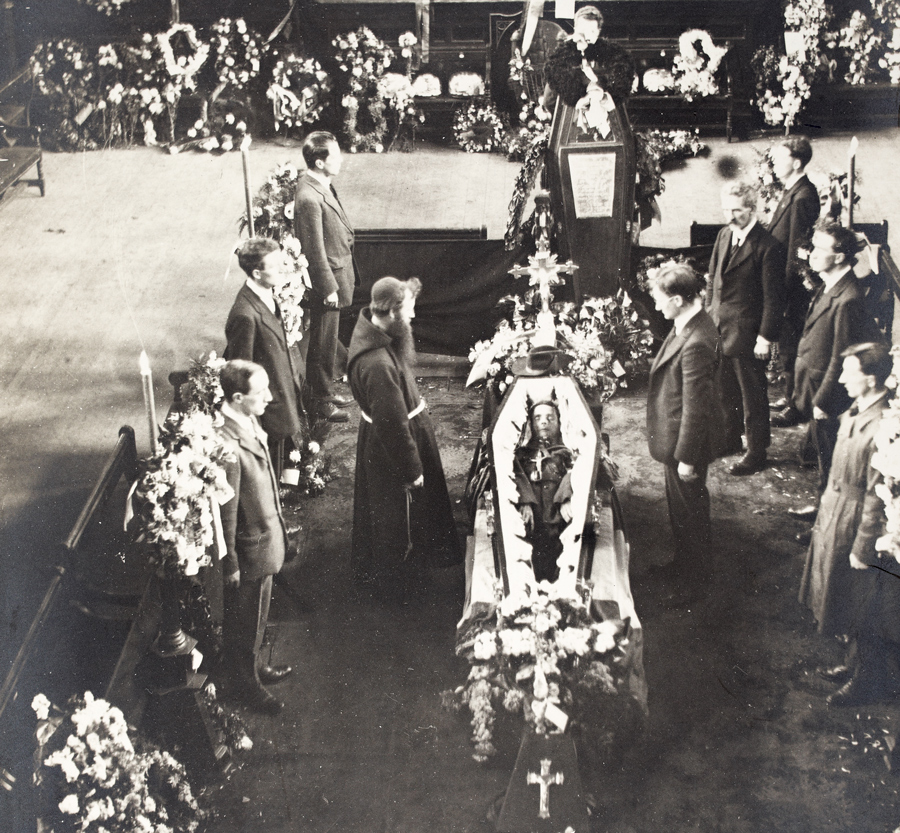World pays tribute to MacSwiney as funeral brings Cork to a standstill
Cork, 1 November 1920 - Tributes have poured in from all corners of the world as the body of the deceased Lord Mayor of Cork, Terence MacSwiney, has been laid to rest.
MacSwiney died in Brixton Prison on 25 October after 74 days on hunger strike.
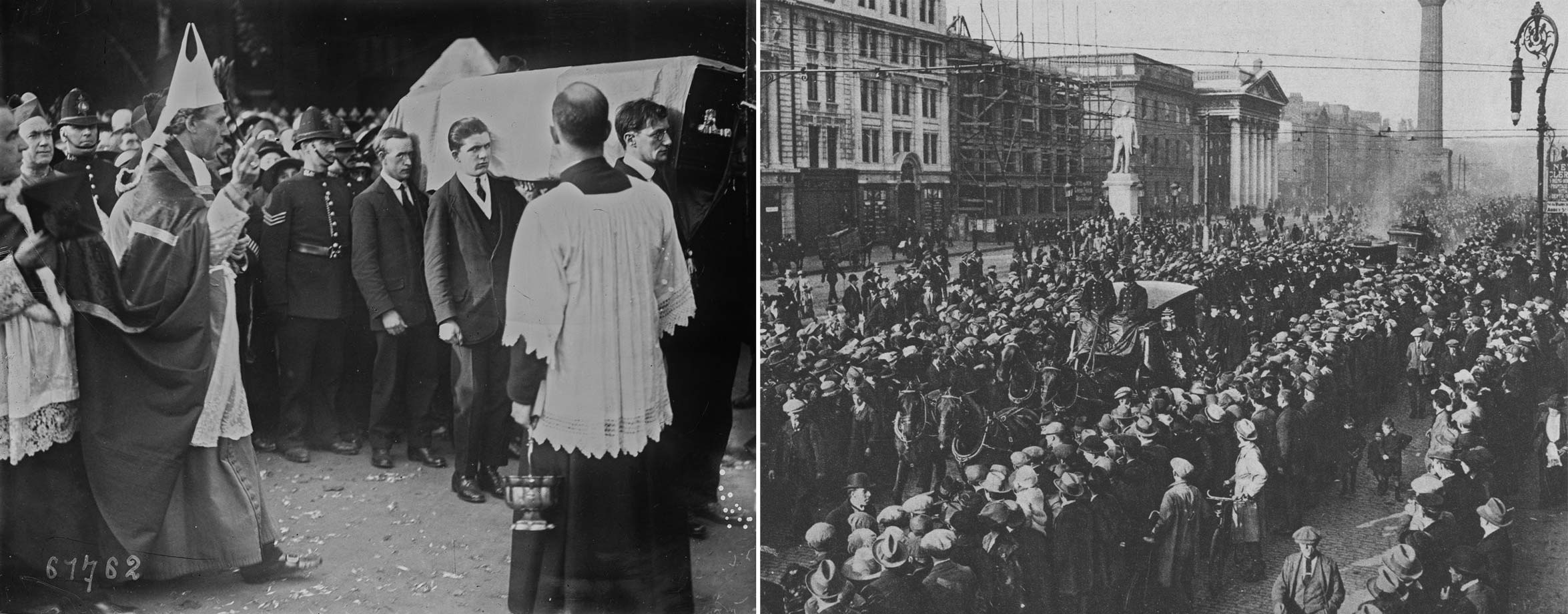
Left: Terence MacSwiney's body carried past Archbishop Daniel Mannix (Image: Bibliotheque nationale de France) Right: Despite the fact that MacSwiney's body wasn't allowed land in Dublin, there was still a public procession in his honour (Image: Illustrated London News, 6 Novemeber 1920)
The journey of his remains through London on 28 October was a magnificent but sombre spectacle. Following a Requiem Mass in St George’s Cathedral, at which Archbishop Mannix was among the officiating priests, thousands of sympathisers lined the route to Euston Station to where the large procession made its slow progress. The bulk of those who made up the cortege came from branches of the Irish Self-Determination League in London, Liverpool and other centres across Britain. MacSwiney’s remains were then taken to Holyhead and onto Cork, where they arrived the following day.
The original plan had been to land in Dublin, but a last minute decision by the government forbade this, fearing it might spark a large scale political demonstration. Instead, when the body arrived in Holyhead, it was placed, against his family’s wishes, on board the Rathmore, a vessel that had been chartered by the authorities, and travelled to Cork accompanied by around 200 armed members of the crown forces. The Irish Independent referred to the scenes at Holyhead as the ‘desecration of the martyred dead’.
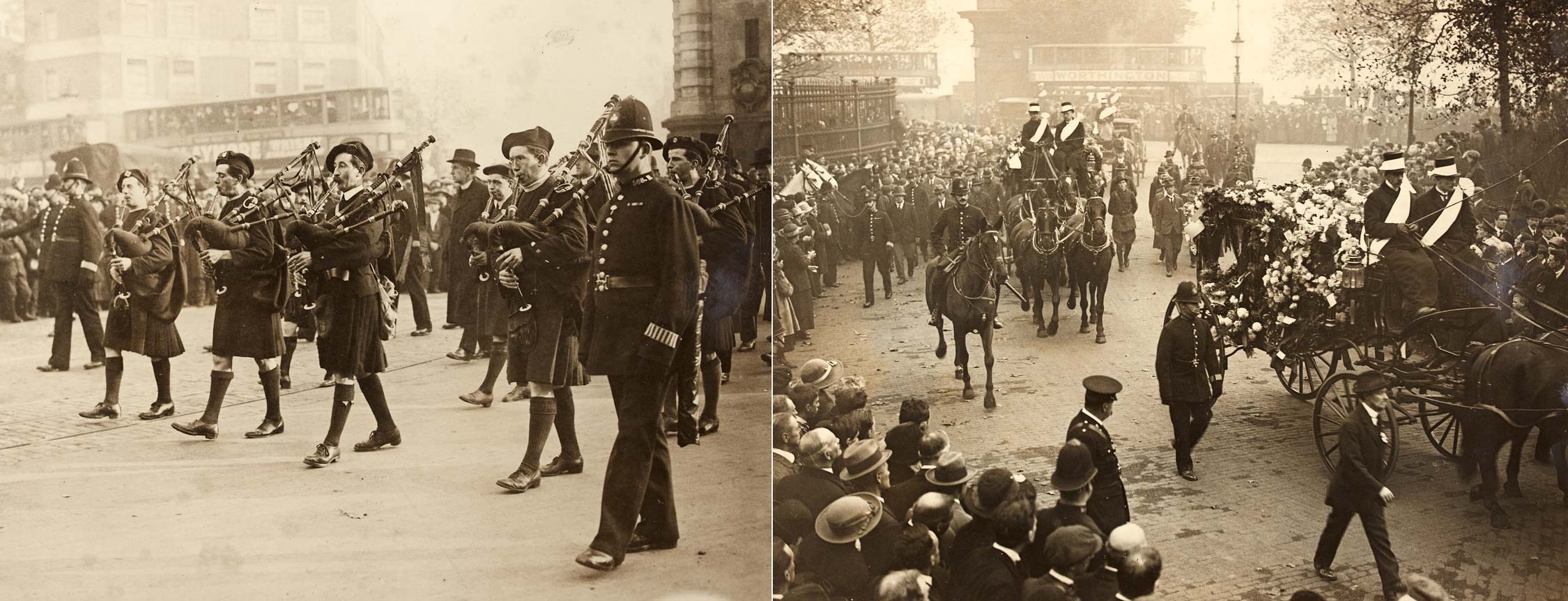
Futher scenes from MacSwiney's funeral procession through London (Images: National Library of Ireland)
The remains lay in state in the Cork City Hall for a night before being conveyed yesterday to the Cathedral of St Mary and St Anne where another Requiem Mass was celebrated. His body was then taken to St Finbarr’s cemetery where it was finally laid to rest a few feet from his murdered predecessor, Tomás Mac Curtain.
Sinn Féin TD Arthur Griffith delivered a graveside speech and said that the deceased had ‘endured all that the power of England could inflict upon him and in enduring, triumphed over that power. His body lies here, his soul goes marching through all the ages. He is not dead. He is living forever in the hearts and conscience of mankind.’
Owing to ill health caused by the ordeal, Muriel MacSwiney, the Lord Mayor’s wife did not attend the London ceremony, nor did she travel to Ireland.
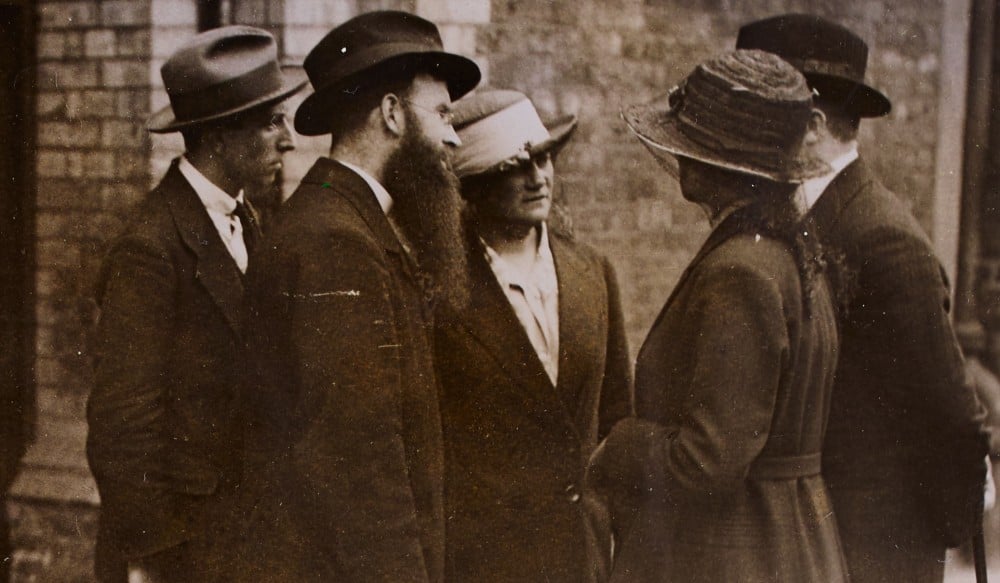
Mary and Muriel MacSwiney, sister and wife of the Lord Mayor, respectively, standing with a group of men (Image: National Library of Ireland)
National day of mourning
In response to Dáil Éireann calling for a day of
general mourning, much of the country came to a standstill on 29
October.
No place of amusement opened its doors and work stopped. Requiem Masses were celebrated and prayers offered up for the repose not only of the deceased Lord Mayor but also for the two deceased hunger strikers in Cork Gaol – Michael Fitzgerald and Joseph Murphy.
In Ulster, however, it became clear that many unionists did not want to join with the sympathising. In Cootehill, Co. Cavan, some unionist businesses remained open and when a Sinn Féin flag was flown at half-mast on the town hall it was taken down by the military who were cheered on by Ulster Volunteers. There was a similar story in Castleblayney, Co. Monaghan, where police and military presonnel visited all the licensed houses and compelled them to re-open.
Visual Guide: How the newspapers reported Terence MacSwiney’s death
Press reaction
The Morning Post, a Tory-aligned newspaper, observed that
the procession of the corpse of MacSwiney through London had
exposed the hollowness of Sinn Féin’s claim that they
suffered under a ‘ruthless British tyranny’, for in
what other country in the world would such a demonstration be
possible? Instead of being a victim, the
Morning Post claimed, Ireland appeared as the
‘spoilt child of an illimitable indulgence’.
However, here in Ireland, even the Irish Times, though opposed to MacSwiney's ideals, has acknowledged that all shades of Irish opinion should respect his sacrifice. ‘He was a brave man who, for the faith that was in him, endured a terrible ordeal with dignity and patience. He willed his own death, but willed it unselfishly for a cause which he held to be worth the process. We maintain that the end did not justify the means’.
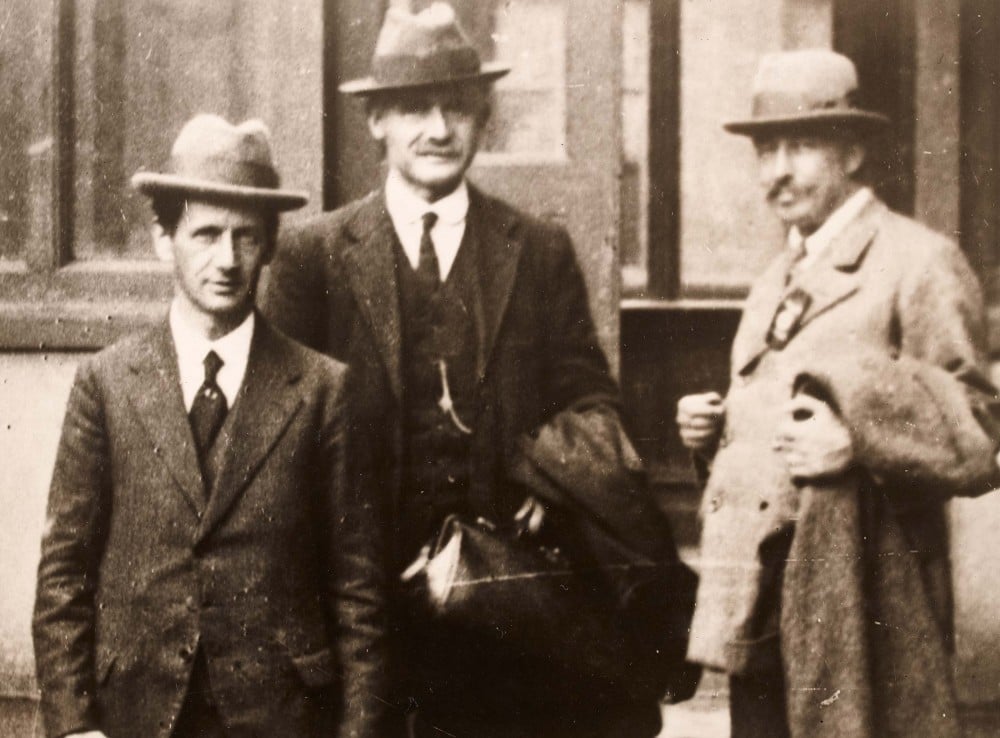
One of the last photographs of Terence MacSwiney (left) before he was arrested (Image: National Library of Ireland)
The Cork Examiner has claimed that there was no need to eulogise someone who had been ‘tested and found true to his country’. The Examiner stated that the name Terence MacSwiney will go down as a devoted champion of Ireland’s liberty, and as such he will be remembered and his memory revered. ‘Outside Ireland, in lands where free men dwell, the story of his heroic fight against overwhelming odds, of his determination not to yield while life was his – has been followed with the most profound sympathy.’
The plight of the hunger striking Lord Mayor has been closely followed in the international press during recent months and his death has been widely reported. In France, where coverage has been generally sympathetic towards MacSwiney throughout his imprisonment, there has been widespread criticism of the English government. Le Bonsoir has accused the government of being more kindly disposed to the Germans than to the Lord Mayor of Cork, while Le Radical states that whatever one makes of MacSwiney’s act from a political point of view ‘there is no one with a heart but must bow before such a profession of patriotic faith, such a heroism of sacrifice.’
British Pathé footage of Terence MacSwiney's funeral
[Editor's note: This is an article from Century Ireland, a fortnightly online newspaper, written from the perspective of a journalist 100 years ago, based on news reports of the time.]

